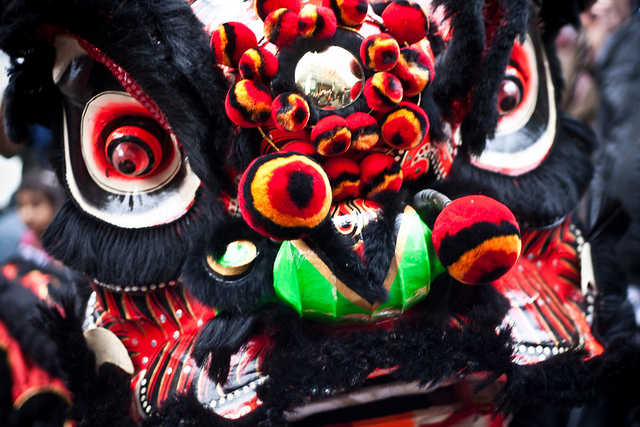Dec 20, 2017
Chinese New year Festival Nagoya 2018
Although Japan adopted the Gregorian calendar in 1873, celebration of the Chinese year is still an important cultural event in the country. This year (2018) the Chinese New Year falls on February 16, however Nagoya wants to get in on the fun a little bit early.
Chinese New Year Festival
From January 6 to 8, Hisaya Odori Koen will host the 12th annual Chinese New Year Festival in Nagoya. As the largest celebration of Chinese culture in the Chubu region, it is a must see for anyone who is interested in China and its vast cultural heritage.
The event sees a variety of Chinese traditional performances, with music, dance and an attendance of the Shaolin Temple of Henan Provincial Culture and Arts Group. The most anticipated of these exhibitions are the lion and dragon dances, but as well as these events, there are also a variety of stalls selling clothes, souvenirs, Chinese goods and, of course, plenty of fantastic food.
This year includes an added celebration as 2018 is the 40th anniversary of the signing of the Treaty of Peace and Friendship between Japan and China. To mark this occasion, as well as the traditional displays, there will also be a visit from the mascot of Kumamoto, Kumamon. For some reason.
Whether its for the performances, the food, the unexplained appearance of one of Japan’s most beloved characters, to celebrate Sino-Japanese friendship, or just to enjoy a few Chinese beers and food, then it can be a pretty good day out for all of the family.
Chinese Festival Details
- Where: Hisaya Odori Park, 3 Chome-16 Sakae, Naka-ku (map)
- When: January 6 11:00-17:00, January 7 and 8 10:00-17:00 to 8, 2018
- Website: n-cj.com
Chinese New Year Facts
Fireworks – Bamboo stems with gunpowder were used in ancient China to scare away evil spirits. These have become the firecrackers we know today. Many cities across the world have controlled or banned the use of fireworks at Chinese New Year due to the fire risk they pose, though Yokohama is not one of them.
Red Envelopes – It was once believed that red would frighten evil spirits, and so it is into red envelopes that married or elderly people place money to give to unmarried juniors as a way of gaining good luck for the coming year. The envelopes will contain an odd-numbered currency (even-numbered currency is given at funerals) and will be placed under the pillow unopened and slept upon for 7 days.
Clothing – New clothes will be worn, from top to toe, to symbolize a new beginning for a new year. These clothes will commonly be red or brightly colored to frighten evil spirits.
Song – A popular song sung at this time of year is Xīn Nián Hǎo Ya; literally: “New Year’s Good”. Interestingly it has a melody not dissimilar to Oh My Darling, Clementine.
Greetings – Want to wish someone ‘happy new year?’ Well, it’s ‘Xin Nian Kuai Le’, pronounced ‘sheen nian kwai luh’ in Mandarin or ‘San Nin Fai Lok’, pronounced ‘san knee fy lock’ in Cantonese. For a more traditional greeting try ‘wishing you great happiness and prosperity’ which is ‘Gong Xi Fa Cai’, pronounced ‘gong zee fah chai’ in Mandarin or in Cantonese ‘Gong Hey Fat Choy’, pronounced ‘gung hey fah choy’.
Other Chinese New Year Events in Japan
Yokohama
Yokohama Chūkagai has a 150-year history, stretching back to the Meiji era opening of Yokohama’s seaport, when many Chinese immigrants arrived in Japan. Today it is the largest Chinatown in Asia, one of the biggest in the world, with around 250 Chinese owned or themed shops and restaurants. As such the celebration of New Year is understandably large and goes on for more than two weeks from February 15 to March 2.
- Website: www.chinatown.or.jp
- Closest Railway Stations: Ishikawa-cho Station; Motomachi-Chukagai Station
Kobe
For around a week in February, the whole of Kobe’s Chinatown area is bustling with activity and celebrations to ring in the new year. Whether you’re into parades, ritual dances, martial arts, acrobatics, or even just some authentic Chinese cuisine, there is certainly something for everyone during the festival.
- Website: www.nankinmachi.or.jp
- Closest Railway Stations: JR Motomachi Station
By Mark Guthrie
Image by Garry Knight (Own work) [CC BY-SA 2.0], via flickr.com (modified)
Image by kana hata (Own work) [CC BY-SA 2.0], via flickr.com (modified)



About the author